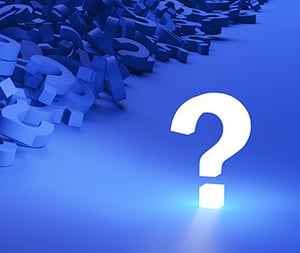Why your patent attorney asks ‘those’ questions

Is the abbreviation used in your company name written with or without full stops? Does your innovative receiver switch between frequencies A, B and C or A, B or C? Patent attorneys sometimes ask detailed, tedious questions. They are not exactly complicated but do seem to be rather superfluous. Surely we can just get the name from the e-mails? And surely those frequencies speak for themselves? With the aid of two painful examples (not from EP&C's practice by the way), I will explain why patent attorneys never stop asking those tedious questions.
€100,000 of unnecessary litigation costs
Just last year, a manufacturer of agricultural sorting machines wanted to sue a competitor for infringing their patent. At first glance, the manufacturer, let's say their name was Janssen, appeared to have a good case. But it turned out they didn't. On examining the documents, the judge discovered that Janssen's patent was not legally valid. The name of a legal entity did not appear on the patent, only the trade name.
Whereas it should have said Sorteermachines BV , so to speak, it said Janssens Knollenselectie. Even though everyone knows Janssen by that second name, only the first one is legally valid. As a result Janssen lost the infringement case that it had itself initiated, had to pay €100,000 in legal fees and suddenly no longer had a valid patent.
Crucial comma
The incident is dramatic but is not an isolated case. Last month, it became known that Boeing saw the protection of a patent go up in smoke because of a punctuation error. In 2011, the aerospace company was granted a patent on a technology that is used to communicate flight routes and other data. Competitor Airbus successfully filed an opposition a year later. In 2016, Boeing appealed. However, the patent holder made a crucial mistake.
In the original application, Boeing filed a claim that contained three sub-features. However, the way these sub-features appeared in the documents submitted during the appeal was slightly different to the way they appeared in the patent claim originally filed. The first two features were separated by a comma, whereas features two and three were not. This resulted in the claim being interpreted differently to the one originally filed and Boeing losing the case and its patent.
Full details
Details are crucial in our work. A wrong name or a missing comma can have disastrous consequences. It is our job to minimise the chances of that happening. So yes, sometimes we may ask a question we already know the answer to, and if you are unlucky we may ask it again a few months later. But the only way for us to safely guide you through the rigorous world of intellectual property law is by working closely together with you on the basis of the same detailed information.

About the author
I studied chemistry in Utrecht and wrote my Ph.D. thesis on organic synthesis. Before joining EP&C as a patent attorney in 2004, I worked at KeyGene, a biotechnology company. I specialize in food and...
More about Robbert-Jan >